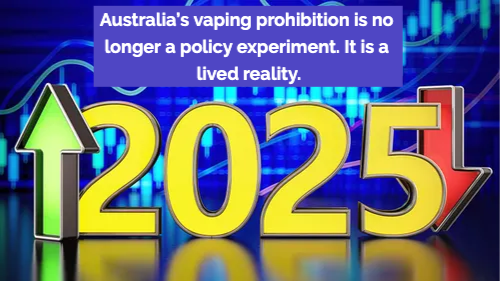The Data Doesn’t Lie: Albanese’s Vape Crackdown Backfires as Young Australians Turn to Smoking
- Alan Gor

- Jul 4, 2025
- 3 min read
Updated: Jul 6, 2025

Alan Gore 04 July 2025
The Roy Morgan survey findings from May 2025 have confirmed what many of us in the tobacco harm reduction community have been warning about for years: Australia’s punitive, prohibitionist approach to vaping is not just ineffective, it’s actively harming public health.
According to Roy Morgan’s latest report, the overall number of Australians who smoke or vape has increased since the so-called “vape crackdown” began in mid-2024. The most concerning trend? A sharp rise among 18–24-year-olds—the very group these policies were supposedly meant to protect.
Let’s break it down:
28% of 18–24-year-olds now smoke or vape, up from 25.1% in September 2024. That’s an increase of 80,000 young adults in less than a year.
Vaping alone increased from 19% to 20.5% in the same group.
Factory-made cigarette smoking jumped from 8.2% to 11.1%, adding 80,000 more young smokers.
Even roll-your-own tobacco use rose, from 7.1% to 7.6%.
So while the government crows about removing “raspberry-ice-pink-unicorn” vapes from shelves, what they’ve really done is drive young adults, many of whom were likely vaping instead of smoking, back to combustible tobacco.
This should be front-page news. Instead, the media spin continues, and now the Roy Morgan article itself, originally published as Finding No. 9936, has mysteriously vanished from their website. Was it “transferred to a new site,” as some are claiming? Perhaps. However, it appears suspicious when a damning report suddenly disappears just as it begins gaining international traction and appears in press headlines around the world.




For a major research firm to quietly remove a politically inconvenient dataset from its public-facing portal after it began exposing government failure is deeply concerning. Whether the removal was internally motivated or externally pressured, it raises serious questions about transparency, integrity, and the politicisation of public data.
This is not just a technical glitch. This is suppression.
When public health policy is built on the premise that evidence should guide decision-making, it becomes a dangerous precedent when uncomfortable evidence is erased from the public record. This Roy Morgan report undermined the key narrative being sold by Health Minister Mark Butler that the vape ban was working, that youth were being protected, and that cigarettes were becoming less common. The truth, as revealed in the data, was the opposite.
And now that truth is missing.
Fortunately, many in the harm reduction community saved the original text and charts. Screenshots, downloads, and quotes from the article continue to circulate, and the data lives on, but this should never have been necessary. In a democracy, inconvenient evidence should be debated, not deleted.
Meanwhile, Minister Mark Butler and the Department of Health continue to double down on a failed strategy. Rather than acknowledge the clear evidence that their prescription-only pharmacy model is unworkable and dangerous, they’ve chosen to vilify adult nicotine users, prop up an exploding black market, and ignore the mounting evidence of policy failure.
Let’s be clear: fewer than 2,000 pharmacies nationwide are supplying nicotine vaping products without a prescription via the SAS-C pathway. Just 40,000 submissions have been recorded. Compare that with the millions of illegal vapes flooding the country and the fact that Border Force seized 7 million in 2024 alone. The illicit market is not shrinking—it’s booming.
The message from young people is crystal clear: when you remove regulated, accessible, safer alternatives, you don’t reduce demand. You just push people towards more harmful, more accessible, and unregulated products.
It’s time for the Albanese Government to face the consequences of its ideological war on vaping. Public health should be guided by evidence, not fear, not media optics, and certainly not outdated moral panic.
Because, as this Roy Morgan data shows, it’s not working. In fact, it’s failing spectacularly.


